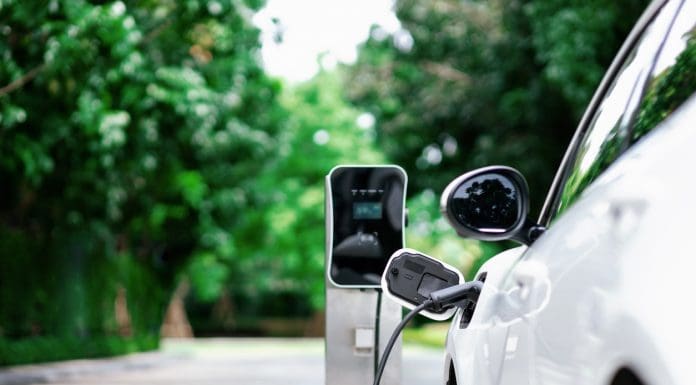Public EV charging infrastructure has made great strides – but it is not enough to focus solely on numbers. To promote more sustainable travel, we must ensure that accessible EV charging is available to everyone, writes Matthew Jackson, associate director at the Scottish Futures Trust
When you picture the perfect holiday, what comes to mind? For me, it usually involves a road trip through rural Scotland with my family using our electric car. But unfortunately, even in 2024, travelling to more remote areas in an EV doesn’t come without its challenges.
We are making incredible progress with public EV charging. What was regarded as quite novel a decade ago is fast becoming more mainstream.
And in support of that, latest figures from the UK Government’s Office of Zero Emissions Vehicles tell us that across the country, there’s been a near-50% year-on-year increase in EV charge points. In many places across Scotland, the notion that there are not enough charge points no longer holds true.
Despite this, it’s simply not enough to focus on the number of charge points – we need them to be of the right speed and in the right places. Headline figures appear encouraging but give no real context as to where they are located – mainly in densely populated areas, or near busy roads.
Making accessible EV charging available in rural areas
We need more chargers evenly spread across the country, including in rural areas, to make accessible EV charging available to everyone. Just as important, they need to be reliable.
Ultra-rapid charging is most definitely the future for places like motorway services and retail locations, and that’s taking off fast. But in my view, there is still a role for ‘slower’ chargers in places where people leave their cars for longer. This is a view shared by Consumer Scotland, which published its research into this sector in August.
Take tourist accommodation, for example. By having accessible EV charging points at short-term lets or in hotel and guest house car parks, people visiting our rural areas, towns and villages can have the certainty of knowing they can charge their EVs economically while they sleep.
In these cases, there’s a reduced reliance on large, ultra-rapid hubs that can be expensive to build and operate, where utilisation may be very seasonal; a basic charge point at guest accommodation can cost as little as £1,000 to install, which can soon be recouped if it encourages more residents.
Private sector investment into accessible EV charging
Attracting more private sector investment into EV charging is crucial for Scotland to achieve its net zero targets, and since all councils adopted our recommendations and introduced tariffs that are broadly in line with the market rate, we are getting there.
This quarter will likely see the total number of privately operated charge points across Scotland exceed those by the public sector for the first time. So much so, we estimate that £40m-£55m will be invested this year alone.
This is great news, as the country’s public charge point network – already critical infrastructure for tens of thousands of people – must be managed like a business, ensuring it’s fit-for-purpose, financially sustainable and well-maintained.
As the EV charging market matures and more competition enters the fray, operators of charge points that are unreliable, or aren’t offering the experience users expect, simply will not survive.
Allowing private sector companies that are best placed to rollout and operate the EV charging network will free up time for local authorities to play an enabling role, paving the way for creative solutions, for example, for people without the ability to charge at home such as those that live in flats.
Kerbo Charge
A great example of this is Kerbo Charge, which is being trialled in Stirling – the same company that was featured on the BBC’s Dragons’ Den earlier this year and won the investment of Deborah Meaden.
The company installs a small channel through the pavement for homes with on-street parking, allowing residents to charge at home.
Solutions like this will be key to a Just Transition for Scotland. According to the latest Zap Map data, someone who can charge their car at home pays on average £680 per year, compared with £1,820 for someone relying on public charge points. We need to close the gap.
This is why we’re supporting Transport Scotland’s EV Infrastructure Fund to work with the private sector to install charging in areas of Scotland without driveways or where the rural economics remain challenging.
There is appetite among the public for greener transport, and the infrastructure to support the transition to EVs is crucial to building consumer confidence.
There isn’t a one-size-fits-all approach, but I’m optimistic that we’re on the right road – and with the right chargers in the right places, we’ll reach our destination. My perfect holiday using our EV is getting closer.
The post To drive change, we need accessible EV charging in the right places appeared first on Planning, Building & Construction Today.


